Abstract
The in vitro activities of LY127935 (LY) were compared with those of other beta-lactam antibiotics. LY was highly active (minimal inhibitory concentration [MIC] range 0.06 to 0.25 micrograms/ml) against the common Enterobacteriaceae (including Providencia stuartiia, Enterobacter, and Serrati marcescens), 8 to 16 times more active than cefoxitin, cefuroxime, or cefazolin, and from one-half to one-eighth as active as cefotaxime (HR756). The activity of LY against Pseudomonas aeruginosa (with MICs of 4 and 64 micrograms/ml for 50 and 90% of test strains, respectively) was essentially similar to that of cefotaxime, but was only one-half as active as CGP 7174/E. LY, cefoxitin, and cefotaxime were essentially equally active against Bacteroides fragilis--each was more active than cefuroxime and cefazolin. Against Staphylococcus aureus, LY (50% MIC and 90% MIC of 4 and 16 micrograms/ml, respectively) was less active than cefotaxime, cefoxitin, or cefuroxime and one-eighth as active as cefazolin. The composition and pH of the culture medium had little effect on the activity of LY, although 7.2 appeared to be the optimum pH.
Full text
PDF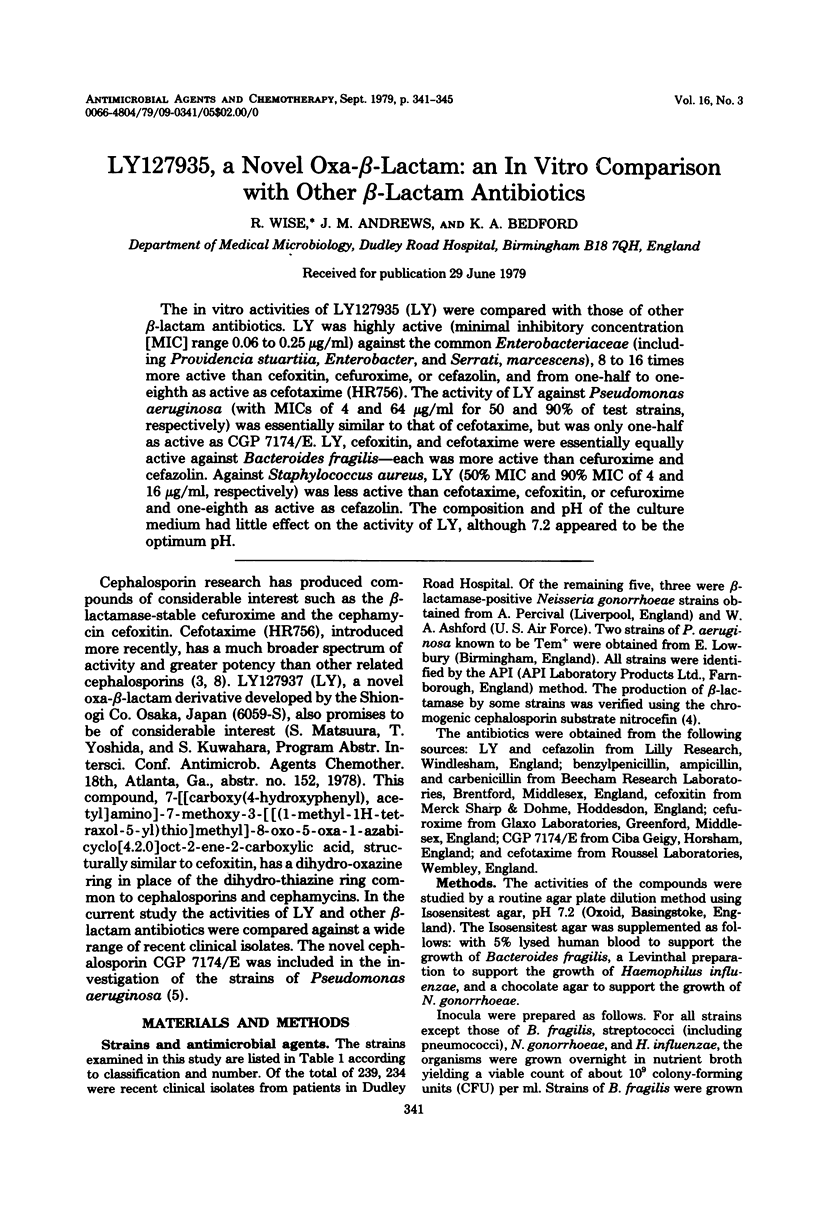
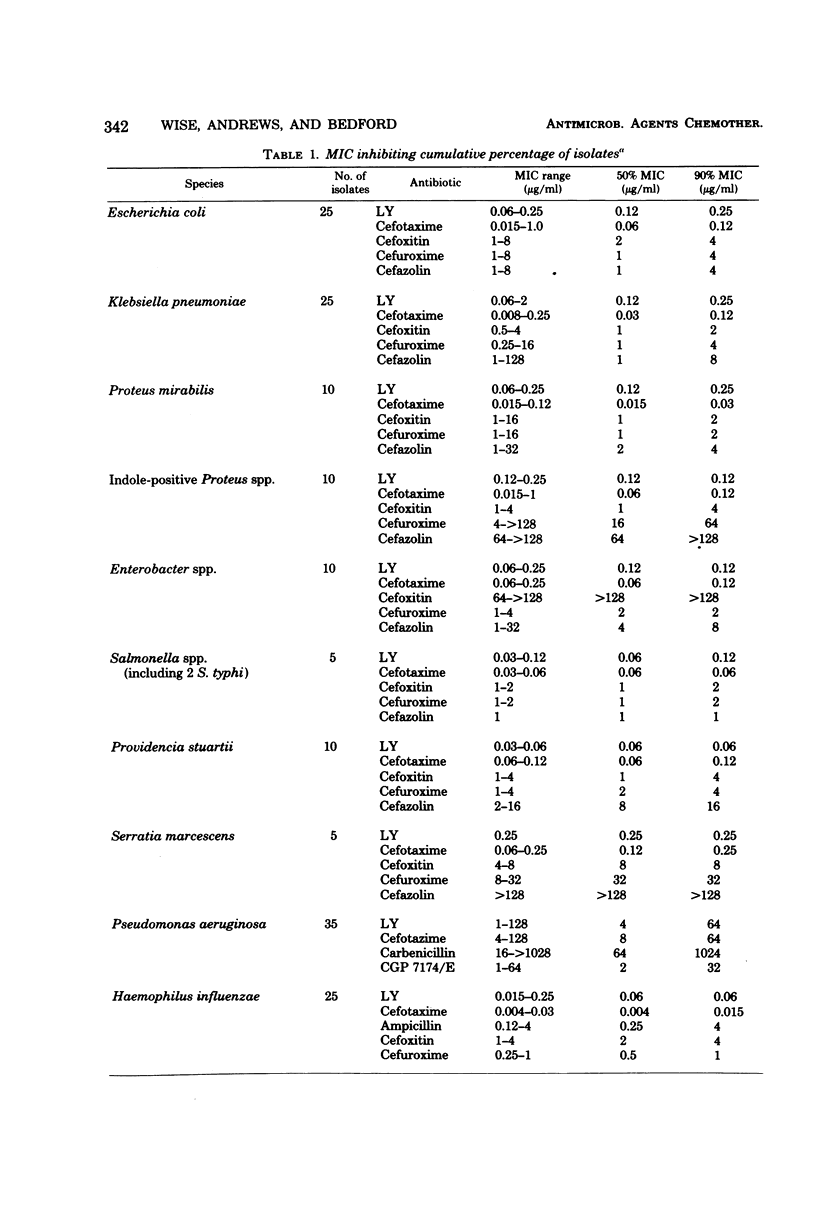
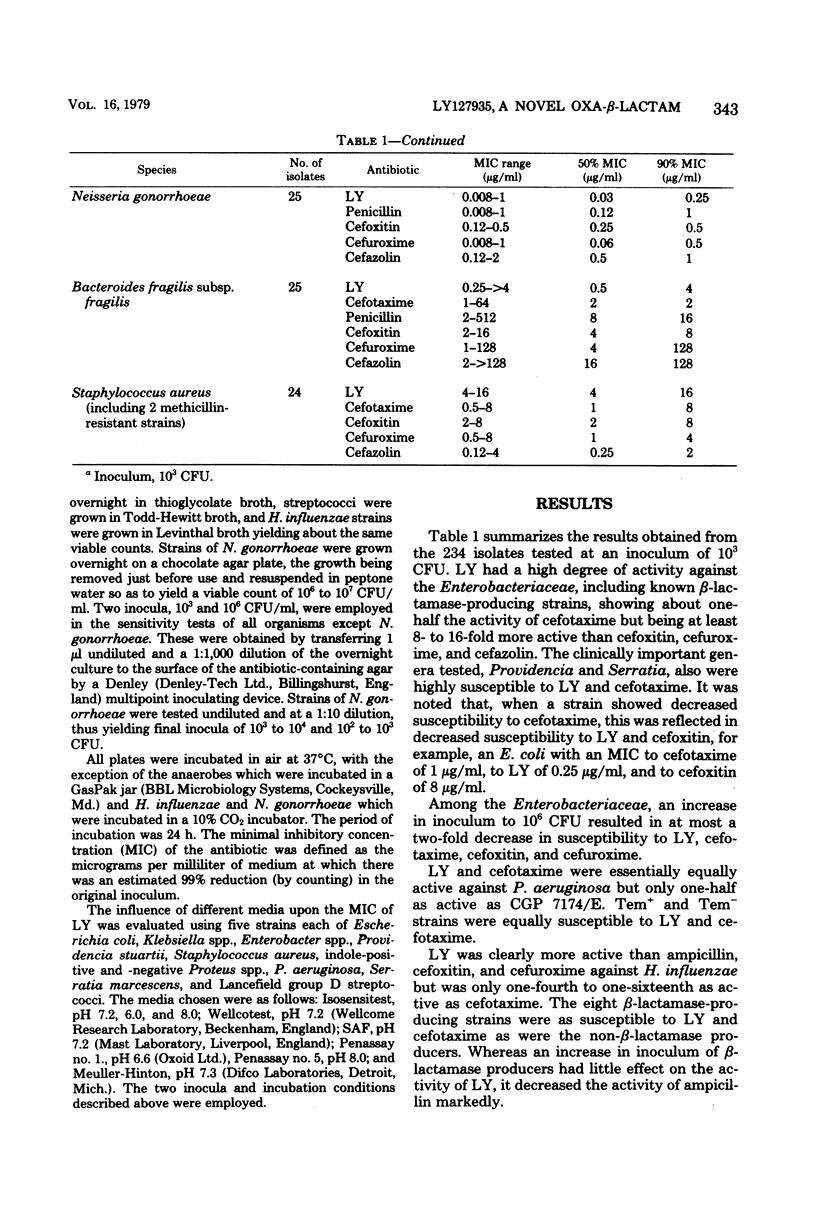
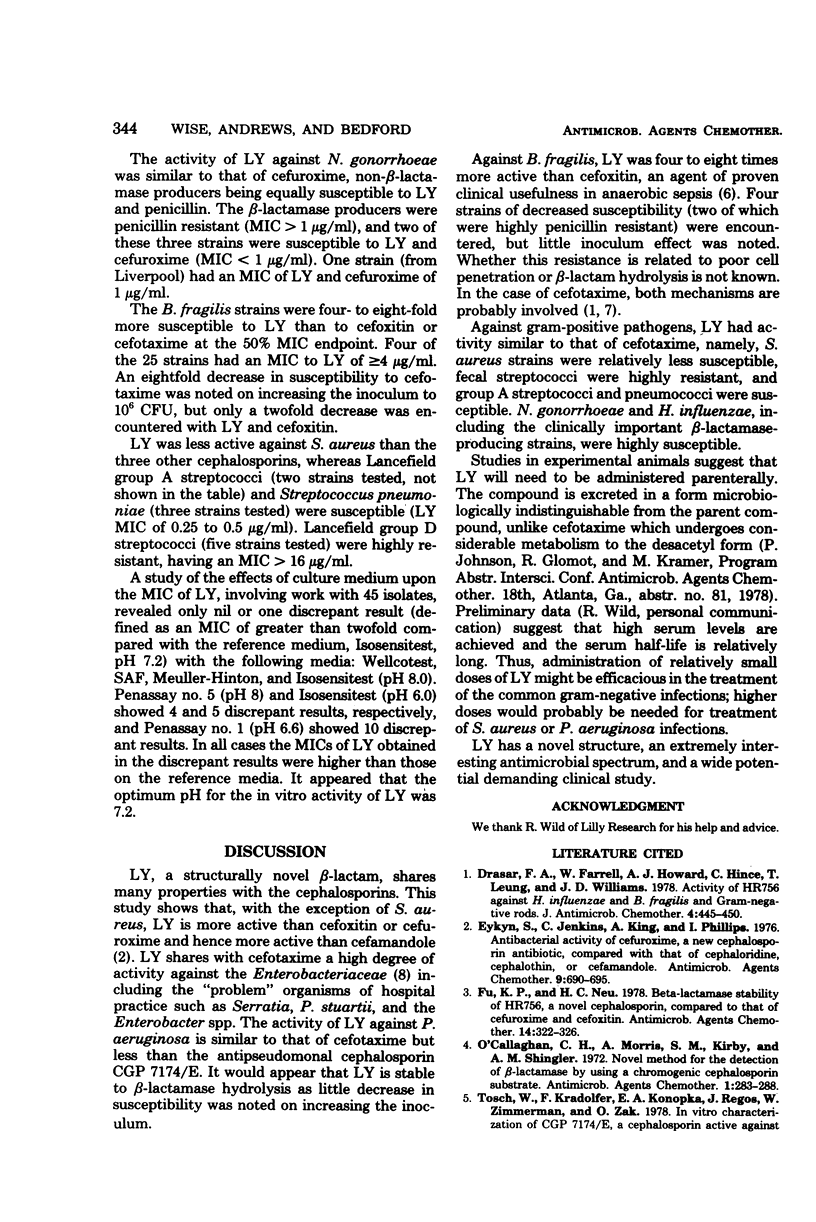
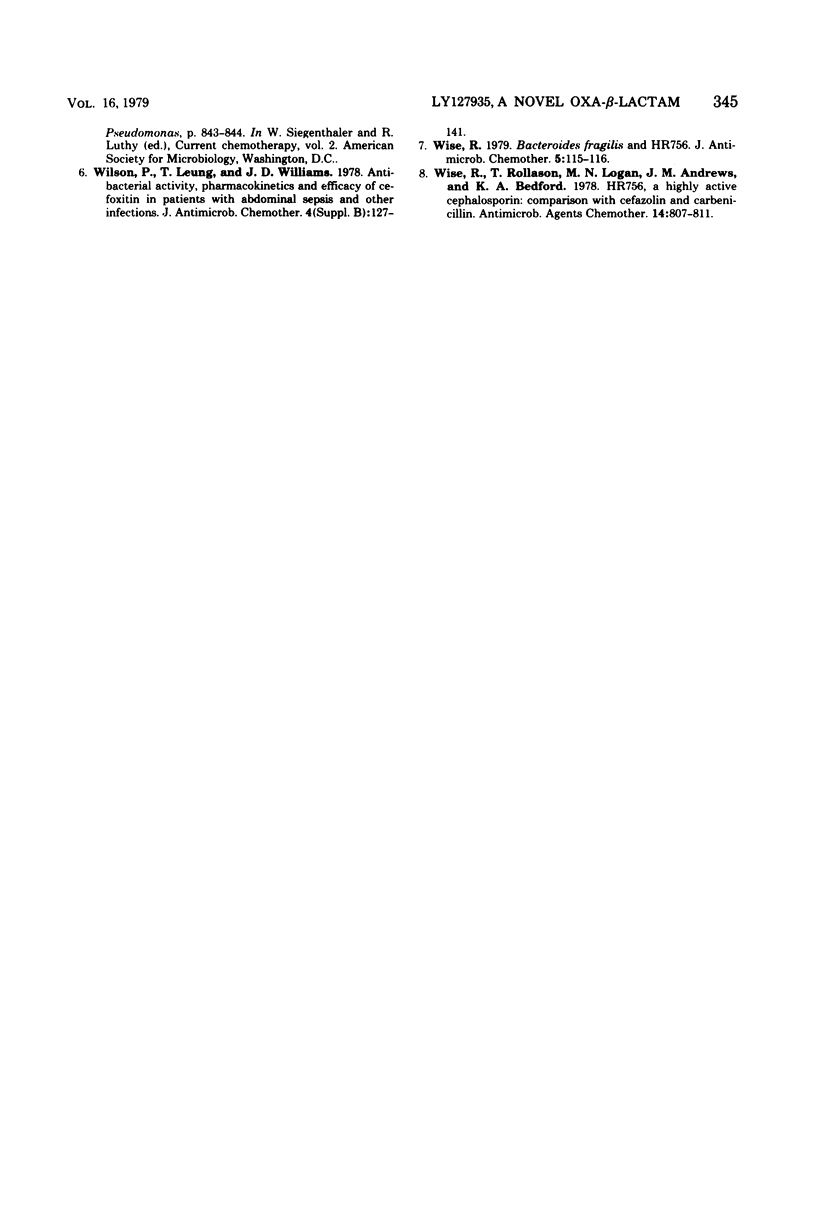
Selected References
These references are in PubMed. This may not be the complete list of references from this article.
- Drasar F. A., Farrell W., Howard A. J., Hince C., Leung T., Williams J. D. Activity of HR 756 against Haemophilus influenzae, Bacteroides fragilis and Gram-negative rods. J Antimicrob Chemother. 1978 Sep;4(5):445–450. doi: 10.1093/jac/4.5.445. [DOI] [PubMed] [Google Scholar]
- Eykyn S., Jenkins C., King A., Phillips I. Antibacterial activity of cefuroxime, a new cephalosporin antibiotic, compared with that of cephaloridine, cephalothin, and cefamandole. Antimicrob Agents Chemother. 1976 Apr;9(4):690–695. doi: 10.1128/aac.9.4.690. [DOI] [PMC free article] [PubMed] [Google Scholar]
- Fu K. P., Neu H. C. beta-lactamase stability of HR 756, a novel cephalosporin, compared to that of cefuroxime and cefoxitin. Antimicrob Agents Chemother. 1978 Sep;14(3):322–326. doi: 10.1128/aac.14.3.322. [DOI] [PMC free article] [PubMed] [Google Scholar]
- O'Callaghan C. H., Morris A., Kirby S. M., Shingler A. H. Novel method for detection of beta-lactamases by using a chromogenic cephalosporin substrate. Antimicrob Agents Chemother. 1972 Apr;1(4):283–288. doi: 10.1128/aac.1.4.283. [DOI] [PMC free article] [PubMed] [Google Scholar]
- Wilson P., Leung T., Williams J. D. Antibacterial activity, pharmacokinetics and efficacy of cefoxitin in patients with abdominal sepsis and other infections. J Antimicrob Chemother. 1978 Jul;4(B):127–141. doi: 10.1093/jac/4.suppl_b.127. [DOI] [PubMed] [Google Scholar]
- Wise R. Bacteroides fragilis and HR 756. J Antimicrob Chemother. 1979 Jan;5(1):115–116. doi: 10.1093/jac/5.1.115. [DOI] [PubMed] [Google Scholar]
- Wise R., Rollason T., Logan M., Andrews J. M., Bedford K. A. HR 756, a highly active cephalosporin: comparison with cefazolin and carbenicillin. Antimicrob Agents Chemother. 1978 Dec;14(6):807–811. doi: 10.1128/aac.14.6.807. [DOI] [PMC free article] [PubMed] [Google Scholar]


